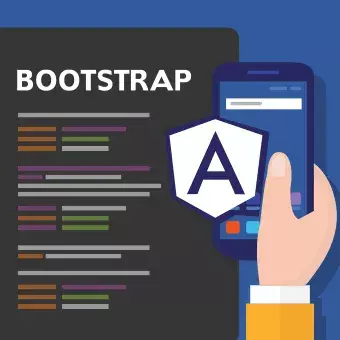Introduction
Cast your mind back to the late 90s and early 2000s – a time when the desktop computer was the gold standard for accessing the internet. Websites were designed with this primary device in mind, and everything else was an afterthought.
Fast forward to today, and it’s hard to imagine a world without the convenience of browsing on our mobile devices. According to recent statistics, mobile devices account for over half of all web traffic globally. This shift has led to a decisive question for business owners and web developers alike: should our primary focus be on mobile or desktop users?
The rise in mobile internet usage has not only changed how we consume content but has also significantly influenced our approach to web development. With so many devices of varying screen sizes and capabilities in play, it’s never been more important to think about how your website looks and functions across the board.
Looking for a Web Agency?
What is Mobile-First Design?
The term “Mobile-First” might sound modern, but it’s been a standard phrase in industry for quite some time now. Simply put: the mobile-first approach prioritises the mobile experience above all else. When designing a website, one starts with the mobile version, optimising it for smaller screens, touch interactions, and potentially slower network speeds.
There are a few compelling reasons for approaching things in this way:
Benefits of Mobile-First:
- Streamlined Content: Designing for mobile forces you to cut the fluff. With limited real estate, only the most essential content makes the cut, ensuring a clutter-free and user-friendly experience.
- Performance Optimisation: Mobile-first ensures that the website loads quickly and efficiently on mobile networks. This can lead to improved user engagement and, crucially, better search engine rankings.
- Future-Proofing: As the relative share (and absolute number!) of mobile internet users continues to grow, having a mobile-optimised site ensures you’re catering to a significant chunk of your audience, both now and in the foreseeable future.
Scenarios Where Mobile-First Shines
- E-commerce Websites: With more consumers shopping on their mobile devices, an optimised mobile shopping experience can significantly boost conversions.
- Local Businesses: Think of folks searching for a nearby café or a plumber on the go. Mobile-first ensures you capture this audience effectively.
- Blogs & Magazines: Readers often consume articles and news on their mobiles during commutes or breaks, making mobile-first an ideal approach for such platforms.
What is Desktop-First Design?
“Desktop-First”, as the name suggests, means building your website with the desktop experience as the primary focus. Although it would be easy to assume that desktop-first is an antiquated approach, in fact, there are several reasons why many still choose to start big and scale down.
Advantages of Desktop-First:
- Full Feature Experience: Desktop-first allows designers to take full advantage of larger screen real estate, implementing a wide array of features without worrying about mobile constraints.
- Detailed Designs: With more space at their disposal, designers can get more creative and intricate with their design elements, offering a richer visual experience for users.
- Legacy Users: For some industries and user demographics, desktop remains the primary mode of internet access. Serving this audience optimally might be essential.
Ideal Scenarios for Desktop-First:
- Complex Web Applications: Think about platforms that offer a myriad of tools and features, like graphic design software or in-depth analytics dashboards. Often, they require the breadth and depth a desktop screen offers.
- B2B Websites: Many business professionals still rely heavily on their desktops, especially during working hours. So, for websites targeting other businesses, a desktop-first approach can be more appropriate.
- Research-Intensive Platforms: Websites that involve a lot of reading, multiple tabs, or detailed research often benefit from the space and organisation a desktop layout provides.
Comparing Mobile-First and Desktop-First
Understanding the differences between these two approaches is pivotal for making an informed decision, so let’s compare the various pros and cons, side-by-side.
Flexibility:
- Mobile-First: Highly adaptable across devices. Starts simple, allowing for progressive enhancement as the screen size increases.
- Desktop-First: Starts complex, which might mean more extensive adjustments for mobile compatibility, but offers the flexibility to build intricate designs from the outset.
User Experience:
- Mobile-First: Given the reduced screen size, the experience is often more streamlined, prioritising essential content and interactions.
- Desktop-First: Provides a richer, more detailed user experience with more features available, but can lead to a cluttered mobile version if not correctly optimised.
Development Time:
- Mobile-First: Can be quicker initially due to its simplicity but might require additional time to enhance for larger screens.
- Desktop-First: Potentially longer initial development due to complexity, followed by time spent on mobile optimisation.
SEO Performance:
- Mobile-First: Often favoured by search engines given the trend towards mobile search. Faster load times on mobile can improve rankings.
- Desktop-First: Might require additional optimisations for mobile speed, which is a significant factor in search engine rankings.
Making Your Decision: Key Factors
Choosing between mobile-first and desktop-first design isn’t just about following trends or industry standards. It’s a strategic decision that should be rooted in your business’s unique needs and objectives. Here are some fundamental factors to bear in mind as you consider which approach aligns best with your goals:
- Business Goals & Target Audience:
Who are you trying to reach? Understanding your audience’s behaviour is key. If you’re aiming for younger demographics or regions with prevalent mobile internet usage, a mobile-first approach might be more suitable. For businesses targeting professionals who primarily work on desktops, a desktop-first design could hit the mark. - Expected Traffic Sources:
Analyse your current website traffic. Where are your visitors coming from? If a significant chunk of your audience accesses your site via mobile, it’s a clear indication of where your design focus should be. - Flexibility & Scalability:
How might your website evolve over time? If you anticipate frequent changes, starting with a mobile-first approach can offer more flexibility. On the other hand, if your website requires intricate features that might be cumbersome on mobile devices, desktop-first could be the way forward. - Budget & Resources:
Let’s be candid – developing a responsive site that looks and functions impeccably on all devices requires time, skill, and, yes, money. Understand your budget constraints and allocate resources wisely, ensuring you get the best bang for your buck. - Competitor Analysis:
What are businesses in your niche doing? While it’s never a good idea to blindly follow the herd, understanding industry standards and user expectations can provide valuable insights.
In truth, there isn’t a one-size-fits-all answer when choosing between mobile-first and desktop-first design. Both approaches have their merits, rooted in different business objectives, audiences, and technical constraints. What’s crucial is aligning your choice with your unique circumstances and future aspirations.
If you’re still navigating these waters and need a guiding hand, your web agency should be able to offer advice and guidance. And if you need guidance on choosing a web agency that suits you, we’ve written about that as well.
The Future: Beyond Mobile and Desktop
As a final thought: While our current debate revolves around mobile-first and desktop-first approaches, it’s essential to acknowledge that the digital landscape is ever-evolving. With the rise of wearable tech, augmented reality (AR), virtual reality (VR), and the Internet of Things (IoT), the way we interact with the online world is set to undergo more seismic shifts.
- Wearable Tech:
As smartwatches and augmented reality glasses become more prevalent, the need for designing optimised experiences for even smaller screens or overlay interfaces grows. These devices could soon be driving a new design philosophy altogether. - Voice Search & Smart Assistants:
With the popularity of smart assistants like Alexa, Siri, and Google Assistant, there’s a rising emphasis on voice search optimisation. This changes the game in terms of content structuring and discoverability. - Adaptive AI Design:
Imagine a website that morphs in real-time based on the user’s preferences, behaviour, and device. AI-driven adaptive design could soon make this a reality, transcending the binary choice of mobile vs. desktop.
In conclusion, while the mobile-first vs. desktop-first debate is of paramount importance today, forward-thinking businesses should also keep an eye on emerging trends. By being proactive and adaptable, you can ensure your digital presence remains relevant and engaging, no matter where technology takes us next.



